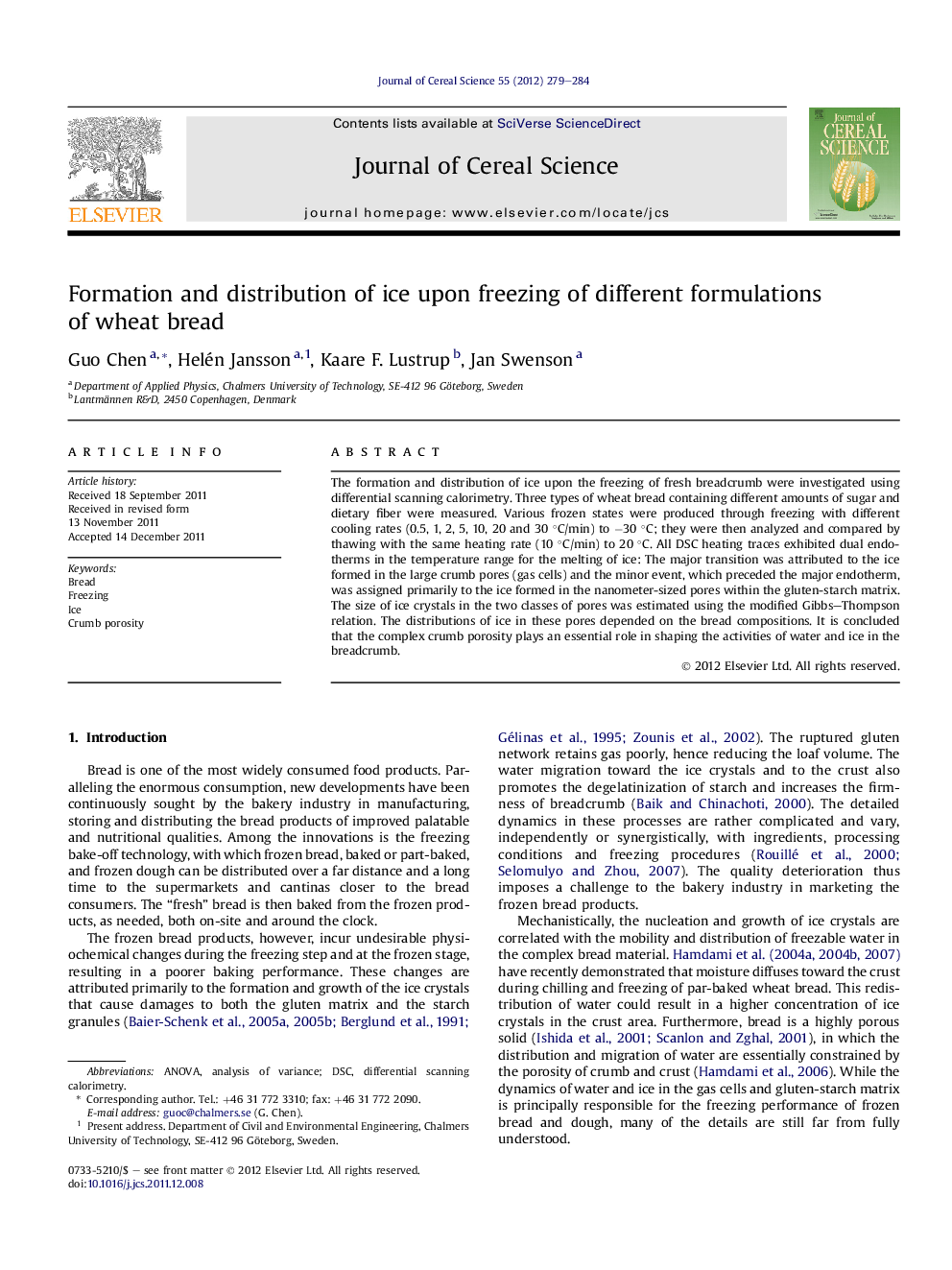| Article ID | Journal | Published Year | Pages | File Type |
|---|---|---|---|---|
| 4516012 | Journal of Cereal Science | 2012 | 6 Pages |
The formation and distribution of ice upon the freezing of fresh breadcrumb were investigated using differential scanning calorimetry. Three types of wheat bread containing different amounts of sugar and dietary fiber were measured. Various frozen states were produced through freezing with different cooling rates (0.5, 1, 2, 5, 10, 20 and 30 °C/min) to −30 °C; they were then analyzed and compared by thawing with the same heating rate (10 °C/min) to 20 °C. All DSC heating traces exhibited dual endotherms in the temperature range for the melting of ice: The major transition was attributed to the ice formed in the large crumb pores (gas cells) and the minor event, which preceded the major endotherm, was assigned primarily to the ice formed in the nanometer-sized pores within the gluten-starch matrix. The size of ice crystals in the two classes of pores was estimated using the modified Gibbs–Thompson relation. The distributions of ice in these pores depended on the bread compositions. It is concluded that the complex crumb porosity plays an essential role in shaping the activities of water and ice in the breadcrumb.
► We studied the formation and distribution of ice in fresh crumb for five freezing rates and three bread formulations. ► The ice-melting transition for crumb shows a minor endotherm preceding the major endotherm observed for bulk-sized ice. ► The dual ice-melting endotherms were related to the crumb porosity and analyzed for two distributions of ice sizes. ► The distribution of ice crystals in the porous crumb depends considerably on the contents of sugar and dietary fiber.
